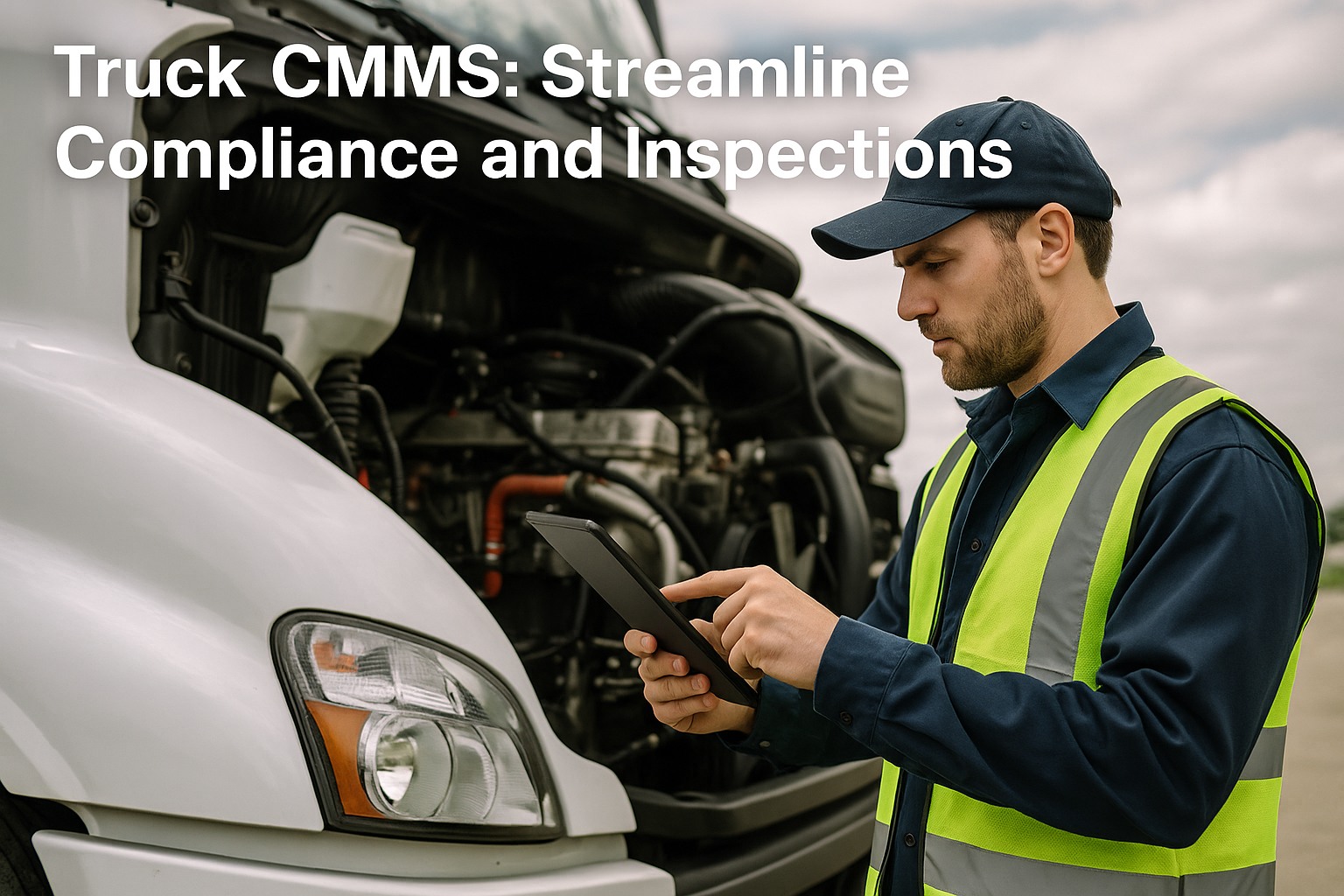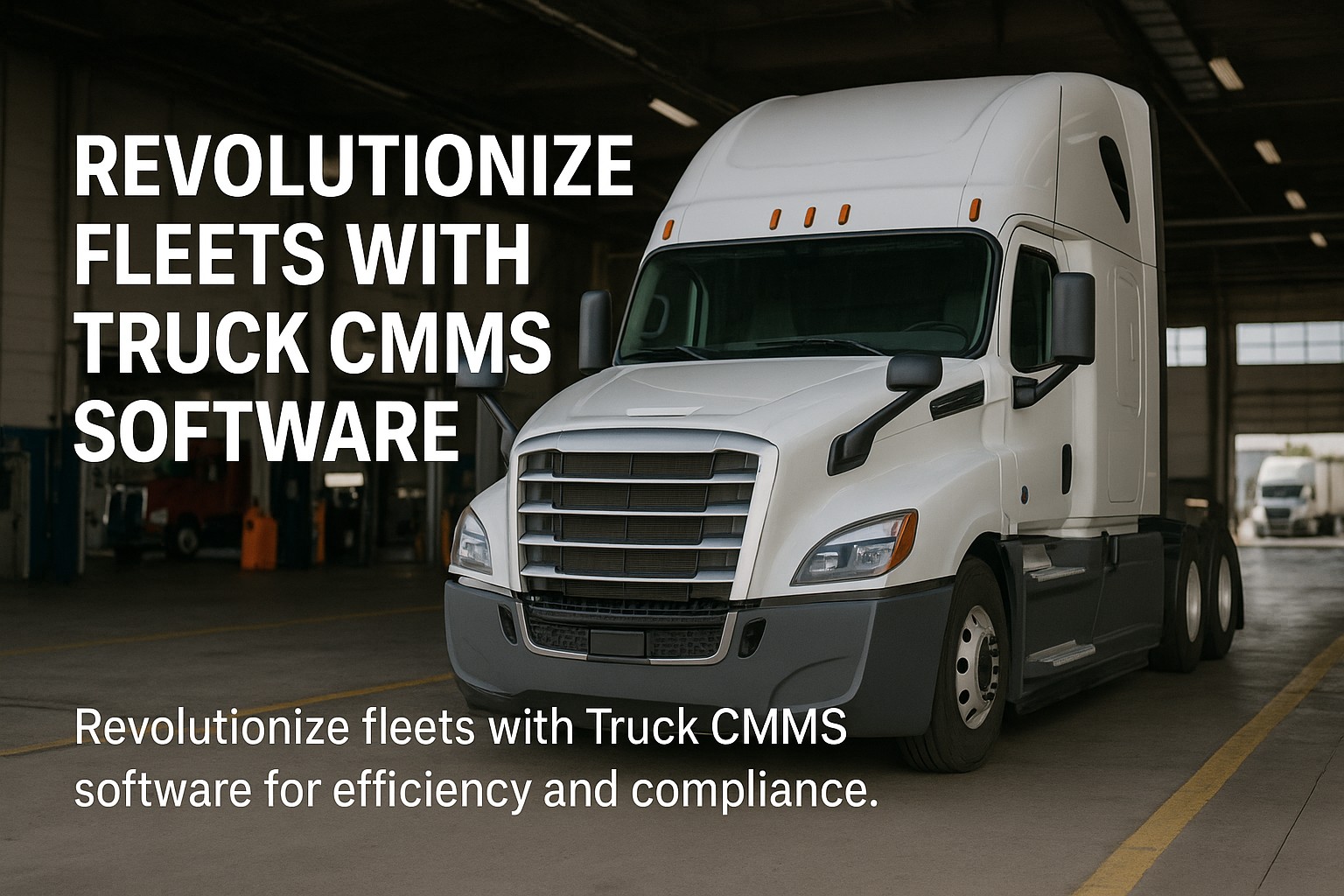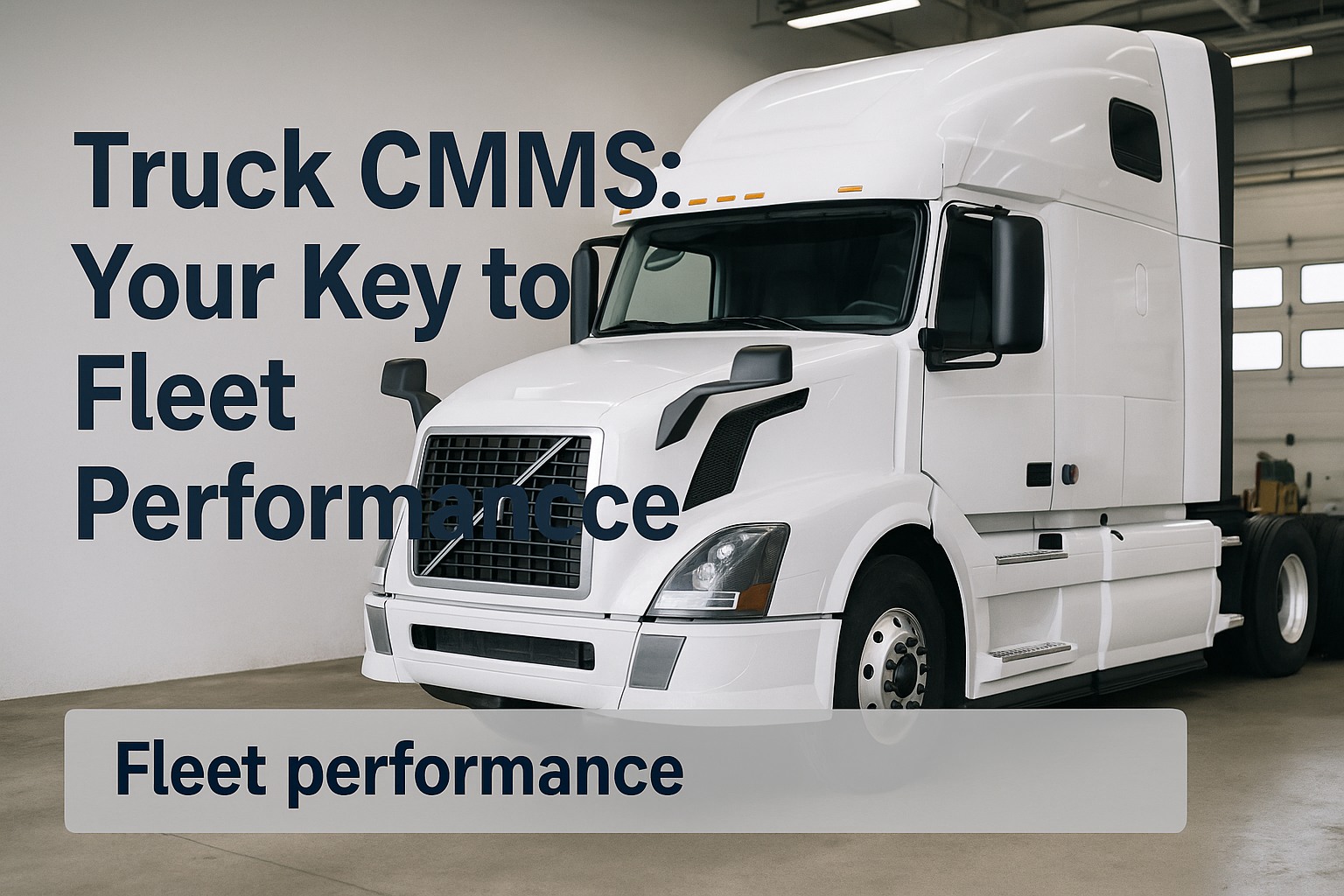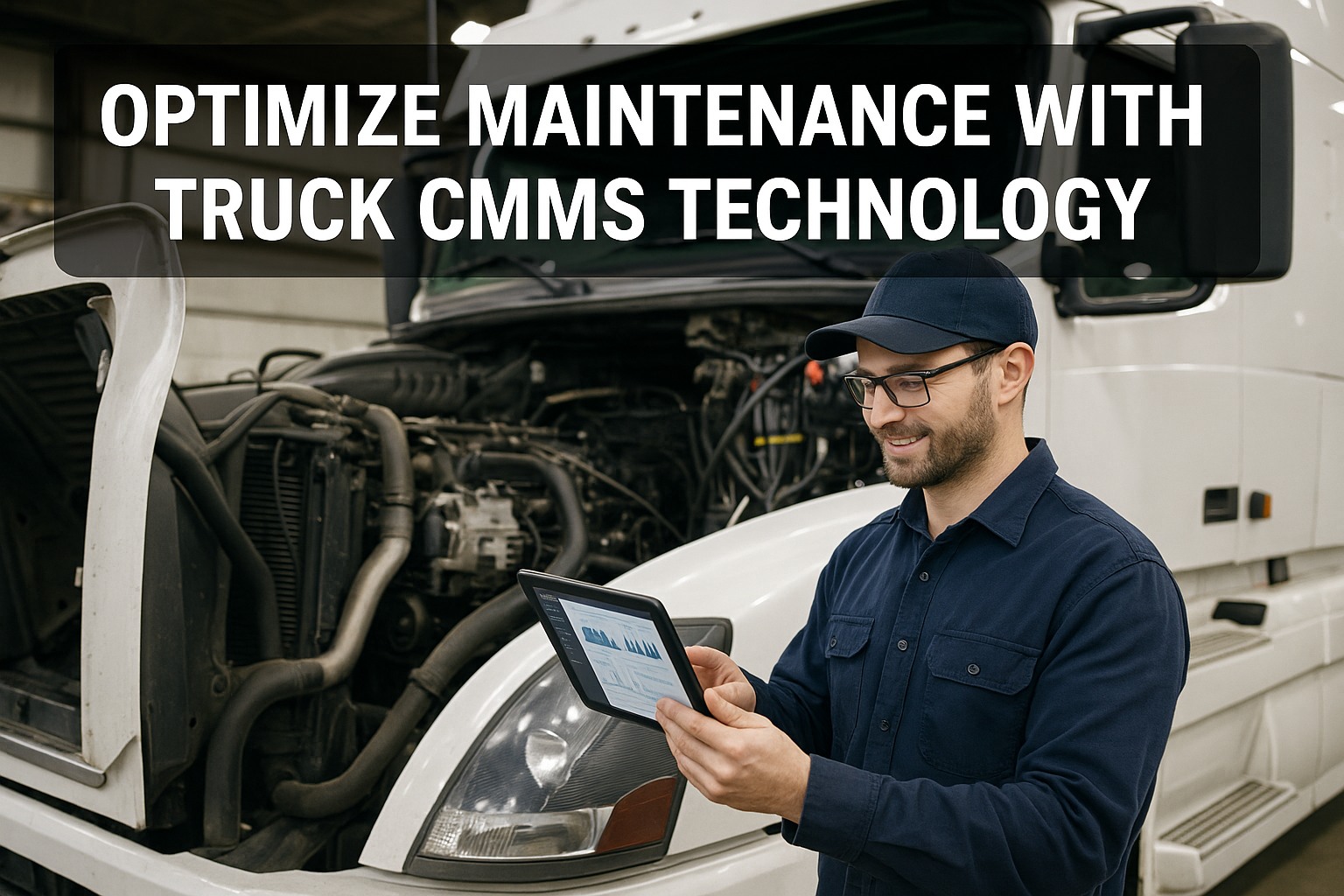Fleet operators face an increasingly complex regulatory landscape where a single compliance violation can trigger cascading penalties—from $15,000 fines to increased insurance premiums and damaged CSA scores. Modern Computerized Maintenance Management Systems (CMMS) have emerged as the definitive solution, with leading fleets reporting 73% reduction in DOT violations while simultaneously cutting maintenance costs by 30%. This transformation isn't just about avoiding penalties; it's about building operational excellence that delivers measurable ROI within six months.
The convergence of stricter FMCSA regulations and rising operational costs has created an environment where manual compliance management is no longer viable. Forward-thinking fleet managers are discovering that the right CMMS platform does more than track maintenance—it becomes a strategic asset that automates compliance workflows, predicts component failures before they trigger violations, and provides real-time visibility into fleet health. Companies implementing comprehensive CMMS solutions report average annual savings of $45,000 per vehicle while achieving 98% inspection pass rates.
Consider the stark reality: The average fleet faces 4.7 roadside inspections per month, with each out-of-service violation costing $8,750 in immediate fines plus untold losses in downtime and reputation damage. Yet fleets using advanced CMMS technology navigate this challenging landscape with confidence, transforming compliance from a burden into a competitive advantage through automated workflows, predictive analytics, and seamless documentation that stands up to the most rigorous audits.
Understanding CMMS: Your Compliance Command Center
A Computerized Maintenance Management System transforms fleet operations by centralizing all maintenance activities, compliance documentation, and operational data into a single intelligent platform. Unlike traditional paper-based systems or basic spreadsheets, modern CMMS solutions leverage cloud technology, artificial intelligence, and real-time data integration to ensure nothing falls through the cracks.
Core CMMS Capabilities for Compliance Excellence:
- Automated Inspection Scheduling: Never miss a DOT inspection deadline with intelligent reminders and automatic scheduling based on mileage, time, or engine hours
- Electronic DVIR Management: Replace paper logs with mobile-friendly digital inspections that meet FMCSA requirements and provide instant defect alerts
- Real-Time Compliance Dashboard: Monitor fleet-wide compliance status, upcoming requirements, and potential violations before they occur
- Predictive Maintenance Analytics: Identify components likely to fail inspections using AI-driven analysis of historical data and current vehicle conditions
- Comprehensive Audit Trail: Maintain complete digital records of all maintenance activities, inspections, and repairs for seamless regulatory audits
CMMS Integration Excellence:
Leading CMMS platforms seamlessly integrate with telematics systems, ELD providers, and accounting software to create a unified compliance ecosystem. This integration eliminates data silos, reduces manual entry errors by 95%, and provides inspectors with instant access to all required documentation.
Critical Compliance Challenges Without CMMS
Operating without a comprehensive CMMS exposes fleets to significant risks that compound over time. Understanding these vulnerabilities highlights why digital transformation is no longer optional for competitive fleet operations.
Inspection Failures
Manual tracking leads to missed inspections, resulting in average fines of $14,700 per violation and potential out-of-service orders that strand vehicles and drivers.
Poor CSA Scores
Without systematic maintenance tracking, CSA scores deteriorate, leading to increased inspections, higher insurance costs, and loss of preferred customer contracts.
Documentation Gaps
Paper-based systems create audit nightmares with missing records, illegible entries, and inability to quickly produce required documentation during inspections.
Hidden Cost Drain
Reactive maintenance triggered by compliance failures costs 3-4x more than preventive maintenance, while emergency repairs average $3,500 per incident.
Maximizing Savings Through CMMS Implementation
The financial impact of CMMS extends far beyond compliance fine avoidance. Strategic implementation delivers compound savings through operational efficiency, reduced downtime, and optimized maintenance spending.
Quantifiable Cost Reduction Areas
Modern CMMS platforms attack costs from multiple angles simultaneously:
- Parts Inventory Optimization: Reduce parts inventory by 25% through accurate usage tracking and predictive ordering
- Labor Efficiency Gains: Increase technician productivity by 40% with mobile work orders and automated scheduling
- Warranty Recovery: Capture 95% of warranty opportunities through automated tracking and claim management
- Fuel Efficiency: Improve MPG by 12% through timely maintenance of fuel system components
ROI Acceleration Strategies
Achieve faster return on investment through targeted implementation:
- Start with high-violation areas like brakes and tires for immediate compliance improvement
- Implement mobile DVIR first to eliminate paper logs and capture real-time defects
- Focus on predictive maintenance for expensive components like engines and transmissions
- Leverage bulk parts purchasing insights to negotiate 15-20% supplier discounts
Real-World Savings Example
A 200-truck fleet implementing comprehensive CMMS achieved:
- $1.2M annual savings in reduced violations and fines
- $875,000 saved through 35% reduction in unplanned repairs
- $425,000 recovered through improved warranty claim management
- $340,000 saved via 15% reduction in parts inventory costs
Comprehensive Benefits of CMMS for Fleet Compliance
The impact of implementing a robust CMMS extends throughout the organization, delivering measurable improvements in compliance, efficiency, and profitability:
73%
Reduction in DOT violations within first year
$45K
Average annual savings per vehicle
6 Months
Typical ROI achievement timeline
98%
Inspection pass rate for CMMS users
Strategic CMMS Implementation Roadmap
Successful CMMS deployment requires a methodical approach that ensures rapid adoption while minimizing operational disruption. This proven roadmap accelerates time to value while building sustainable compliance excellence.
Phase 1: Assessment and Planning (Week 1-2)
- Audit current compliance performance and identify critical gaps
- Calculate baseline costs for violations, repairs, and downtime
- Define success metrics aligned with compliance and financial goals
- Select CMMS platform based on integration capabilities and scalability
Phase 2: System Configuration (Week 3-4)
- Import fleet data including vehicle details, maintenance history, and compliance records
- Configure automated inspection schedules based on DOT requirements
- Set up preventive maintenance programs using manufacturer recommendations
- Establish user roles and permissions for drivers, technicians, and managers
Phase 3: Training and Pilot Launch (Week 5-6)
- Train power users who will champion the system across the organization
- Launch pilot program with 10-20% of fleet to refine processes
- Implement mobile DVIR to demonstrate immediate compliance improvement
- Gather feedback and optimize workflows based on real-world usage
Phase 4: Full Deployment and Optimization (Week 7-8)
- Roll out to entire fleet with dedicated support resources
- Activate advanced features like predictive analytics and cost tracking
- Integrate with existing systems for seamless data flow
- Establish monthly review process to ensure continuous improvement
Selecting the Right CMMS for Compliance Excellence
Not all CMMS platforms deliver equal compliance capabilities. When evaluating solutions, prioritize these critical features:
- FMCSA-Specific Functionality: Built-in support for DOT inspections, HOS integration, and CSA score tracking
- Mobile-First Design: Native apps enabling drivers to complete DVIRs and report issues from anywhere
- Real-Time Alerts: Instant notifications for compliance deadlines, failed inspections, and critical defects
- Comprehensive Reporting: Pre-built compliance reports for audits, inspections, and management review
- Scalable Architecture: Cloud-based platform that grows with your fleet without performance degradation
- Proven Track Record: Demonstrated success helping fleets improve compliance and reduce costs
Transform Compliance from Burden to Competitive Advantage
The choice is clear: Continue struggling with manual processes that drain resources and risk violations, or embrace CMMS technology that simplifies compliance while maximizing savings. Leading fleets have already made the transition, reporting not just fewer violations but fundamentally transformed operations that run more efficiently and profitably.
Modern CMMS platforms represent the convergence of compliance excellence and operational efficiency. By automating routine tasks, predicting maintenance needs, and providing real-time visibility, these systems empower fleet managers to stay ahead of regulations while significantly reducing costs. The result is a fleet that operates with confidence, knowing every vehicle is compliant, every dollar is optimized, and every mile contributes to bottom-line success.







